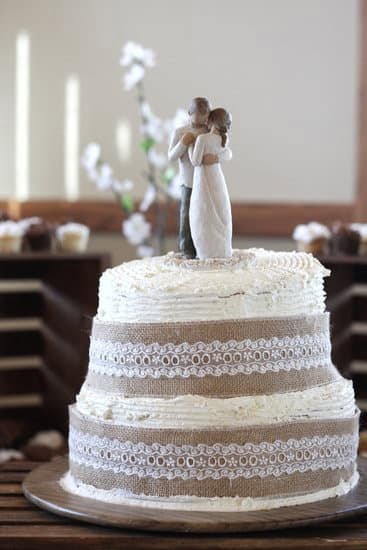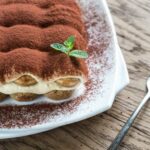Are you wondering how long can you freeze a cake before decorating? Freezing a cake before decorating can be a game-changer for anyone looking to save time and reduce stress when preparing for an event or celebration.
In this article, we will explore the benefits of freezing a cake before decorating and provide guidelines on the ideal timeline for freezing, proper wrapping and storage techniques, the impact of freezing on different types of cake ingredients, tips for thawing a frozen cake, common mistakes to avoid, expert insights and recommendations, as well as creative decorating ideas for previously frozen cakes.
Many people may not realize the advantages of freezing a cake before decorating. Not only does it allow you to prepare in advance and alleviate some of the last-minute pressure, but it also helps in locking in the freshness and moisture of the cake. Understanding the benefits and best practices for freezing a cake before decorating can make all the difference in ensuring your baked creation looks and tastes its best.
Throughout this article, we will delve into various aspects of freezing cakes before decorating, providing valuable insights from experts in the baking and pastry industry. Whether you are a professional baker or someone who simply enjoys baking for special occasions, this comprehensive guide will equip you with the knowledge and skills to effectively freeze cakes before decorating and achieve fantastic results every time.
The Ideal Timeline for Freezing a Cake Before Decorating
Freezing a cake before decorating can be a convenient and time-saving option for many people. However, it’s important to understand the ideal timeline for freezing a cake to ensure that you achieve the best results. So, how long can you actually freeze a cake before decorating?
Understanding the Ideal Timeline
The ideal timeline for freezing a cake before decorating typically ranges from 2 to 4 weeks. This timeframe allows the cake to maintain its freshness and flavor while also preserving its quality for decorating at a later time. Freezing the cake for too long can result in changes to its texture and taste, so it’s important to be mindful of the duration.
Factors to Consider
When determining how long to freeze a cake before decorating, it’s essential to consider the type of cake and its ingredients. While some cakes may hold up well in the freezer for an extended period, others with delicate components such as whipped cream or fresh fruit may not fare as well.
It’s also crucial to take into account the storage conditions of the freezer, as fluctuations in temperature and exposure to air can impact the overall quality of the frozen cake. Proper packaging and storage techniques play a significant role in preserving the integrity of the cake during freezing.
Best Practices
To ensure that your cake preserves its quality and remains suitable for decorating, it’s recommended to freeze it within the designated timeframe and follow proper wrapping and storage techniques. This includes using airtight containers or heavy-duty plastic wrap to prevent moisture loss and protect against freezer burn. Additionally, labeling the frozen cake with the date of freezing can help track its shelf life and maintain optimal freshness.
By understanding these factors and following best practices, you can determine how long you can effectively freeze a cake before decorating while maintaining its quality.
Proper Wrapping and Storage Techniques for Freezing a Cake
When it comes to freezing a cake before decorating, proper wrapping and storage techniques are crucial to maintain the quality and taste of the cake. The key to successfully freezing a cake lies in preventing freezer burn and preserving the moisture within the cake.
One of the best methods for wrapping a cake before freezing is to use several layers of plastic wrap to create an airtight seal. This will help prevent any air from getting in and causing the cake to dry out or develop off-flavors.
In addition to plastic wrap, it is also recommended to wrap the cake in aluminum foil for added protection. This will provide an extra barrier against freezer odors and help maintain the freshness of the cake during its time in the freezer. Once wrapped, it’s important to place the cake in a resealable plastic bag or an airtight container to further protect it from absorbing any unwanted flavors from other freezer items.
Furthermore, when storing a frozen cake in the freezer, it’s essential to keep it away from strong-smelling foods or items that may transfer their odors onto the cake. It’s also important to label the wrapped cake with the date it was frozen to keep track of how long it has been in the freezer.
By following these proper wrapping and storage techniques, you can ensure that your frozen cake remains fresh and flavorful until you are ready to decorate it.
When considering these proper wrapping and storage techniques for freezing a cake before decorating, remember that how long you can freeze a cake before decorating depends on how well it is wrapped and stored. These methods ensure that your cakes remain fresh, moist, and delicious even after being kept in the freezer for an extended period.
The Impact of Freezing on Different Types of Cake Ingredients
When it comes to freezing a cake before decorating, it’s important to understand the impact it can have on different types of cake ingredients. One of the most commonly used ingredients in cake decorating is buttercream. When frozen, buttercream can become quite firm, which might make it challenging to spread evenly on the cake. However, if the buttercream is allowed to come to room temperature and then re-whipped, it can regain its original texture and consistency.
Fondant is another popular choice for cake decoration, and many bakers wonder how freezing affects this particular ingredient. Generally, freezing does not have a significant impact on fondant. However, condensation can occur when the fondant thaws, which may affect its appearance. To prevent this, allow the thawing process to happen slowly at room temperature and avoid touching or manipulating the fondant until it has completely reached room temperature.
In addition to buttercream and fondant, other cake ingredients like fruits or fillings can also be affected by freezing. Some fruits may become slightly mushy or release more liquid upon thawing, while certain fillings may lose their original texture or taste. Therefore, it’s important to consider these factors when deciding whether or not to freeze a cake before decorating.
| Cake Ingredient | Impact of Freezing |
|---|---|
| Buttercream | Firmness when frozen; regains texture after re-whipping |
| Fondant | Minimal impact; potential for condensation during thawing |
| Fruits and Fillings | Possible change in texture or taste upon thawing |
Tips for Thawing a Frozen Cake Before Decorating
Thawing a frozen cake before decorating is a crucial step in the process to ensure that the cake maintains its texture and flavor. Here are some tips for thawing a frozen cake effectively:
1. Plan ahead: Depending on the size of the cake, it is important to allow enough time for it to thaw properly. Generally, smaller cakes can take about 2-4 hours at room temperature, while larger cakes may require 6-8 hours or overnight in the refrigerator.
2. Use proper storage: If you have frozen the cake in layers, make sure to separate them and place them on a wire rack to thaw. This helps air circulate around the cake and prevents any moisture from accumulating at the bottom, which could lead to sogginess.
3. Avoid microwave thawing: While it may be tempting to use a microwave for quicker thawing, this method can result in uneven thawing and even partially cooking the cake. It’s best to stick with natural thawing methods for the best results.
To ensure that your frozen cake retains its delicious taste and texture, follow these thawing tips carefully before moving on to the decorating stage.
Common Mistakes to Avoid When Freezing a Cake
When it comes to freezing a cake before decorating, there are some common mistakes that can impact the quality and taste of the final product. Here are some key points to keep in mind to avoid these errors:
1. Not wrapping the cake properly: One of the biggest mistakes when freezing a cake is not wrapping it tightly and securely. This can lead to freezer burn, which can affect the texture and taste of the cake. To prevent this, make sure to wrap the cake in multiple layers of plastic wrap or aluminum foil, ensuring that it is completely sealed.
2. Freezing for too long: Another mistake to avoid is freezing the cake for an extended period of time. While it is possible to freeze a cake for several weeks before decorating, keeping it in the freezer for too long can lead to a loss of moisture and potentially affect the overall flavor. It’s best to follow recommended timelines for freezing, which vary depending on the type of cake.
3. Storing in a crowded freezer: Improper storage of the cake in a crowded freezer can also result in damage to its appearance and flavor. Make sure to clear out enough space in your freezer before storing the cake, and avoid placing heavy items on top of it that could cause damage.
By being mindful of these common mistakes and following proper freezing techniques, you can ensure that your frozen cake retains its delicious taste and texture when it comes time to decorate and serve it.
Expert Insights and Recommendations for Freezing Cakes Before Decorating
When it comes to freezing a cake before decorating, it is important to consider the type of cake and its ingredients. For example, a basic sponge cake can be frozen for up to three months if properly wrapped and stored, while a cake with a delicate filling or frosting may only last for one month in the freezer. The key is to maintain the quality and flavor of the cake while it is frozen.
Proper wrapping and storage are essential when freezing a cake before decorating. It is recommended to wrap the cake tightly in plastic wrap to prevent freezer burn and then place it in an airtight container or heavy-duty freezer bag. This will help preserve the moisture and texture of the cake during freezing.
It’s also important to note that certain types of fillings and frostings may not freeze well. For example, whipped cream or mousse fillings are best added after the cake has been thawed, as freezing can cause them to become watery or lose their fluffy texture. On the other hand, buttercream and cream cheese frostings tend to freeze well and maintain their consistency after thawing.
| Freezing Cake Type | Maximum Freezing Time |
|---|---|
| Basic Sponge Cake | Up to 3 months |
| Cake with Delicate Filling/Frosting | Up to 1 month |
Creative Decorating Ideas for Previously Frozen Cakes
Decorating a cake that has been previously frozen can be just as beautiful and delicious as decorating a fresh one. In fact, freezing a cake before decorating can actually make the process easier and more efficient. Here are some creative decorating ideas for previously frozen cakes that will help you achieve stunning results.
Layered Decorations
One fun and visually appealing way to decorate a previously frozen cake is to create layered decorations. This could include piping different designs or patterns on the cake using various colors of buttercream, creating a textured effect. You can also add layers of edible flowers, fruit slices, or even chocolate shavings for an artistic touch.
Fondant Artistry
If you plan to use fondant to decorate your cake, freezing it beforehand can actually make the process smoother. Once the cake is thawed, the fondant will adhere better and hold its shape more effectively. Consider creating intricate fondant designs such as 3D shapes, flowers, or even geometric patterns for a show-stopping finish.
Whimsical Toppings
For a playful and whimsical approach to decorating a previously frozen cake, consider adding unique toppings like mini marshmallows, colorful candies, sprinkles, or even edible glitter. These eye-catching embellishments can add fun and personality to your cake while disguising any imperfections that may have occurred during the freezing process.
By using these creative decorating ideas for previously frozen cakes, you can elevate the visual appeal of your desserts while still enjoying the convenience and benefits of freezing them before decorating. Remember to allow your cake to fully thaw before applying decorations to ensure optimal taste and texture.
Conclusion
In conclusion, freezing a cake before decorating offers numerous benefits, such as convenience, better flavor development, and extended shelf life. By understanding the ideal timeline for freezing a cake and following proper wrapping and storage techniques, you can ensure that the cake retains its quality and freshness. It is recommended to freeze a cake for up to 2-3 months for optimal results, but this may vary depending on the type of cake and ingredients used.
When freezing a cake, it is important to wrap it tightly in plastic wrap or aluminum foil to prevent freezer burn and moisture loss. Additionally, storing the wrapped cake in an airtight container will further protect it from absorbing any unwanted odors or flavors from the freezer. Thawing the frozen cake properly before decorating is also crucial to maintain its texture and taste.
Furthermore, considering different types of cake ingredients like buttercream or fondant can help in determining the impact of freezing on each component. It is also advisable to follow expert insights and recommendations for specific cakes and decorations, as well as avoiding common mistakes when freezing a cake.
Overall, with the right techniques and precautions, freezing a cake before decorating can be a great time-saving strategy while still achieving delicious results. Whether you are a professional baker or an amateur enthusiast, understanding the best practices for freezing cakes will ensure that your decorated creations are just as delightful as freshly baked ones.

Welcome to our cake decorating blog! My name is Destiny Flores, and I am the proud owner of a cake decorating business named Cake Karma. Our mission is to provide delicious, beautiful cakes for all occasions. We specialize in creating custom cakes that are tailored specifically to each customer’s individual needs and tastes.





